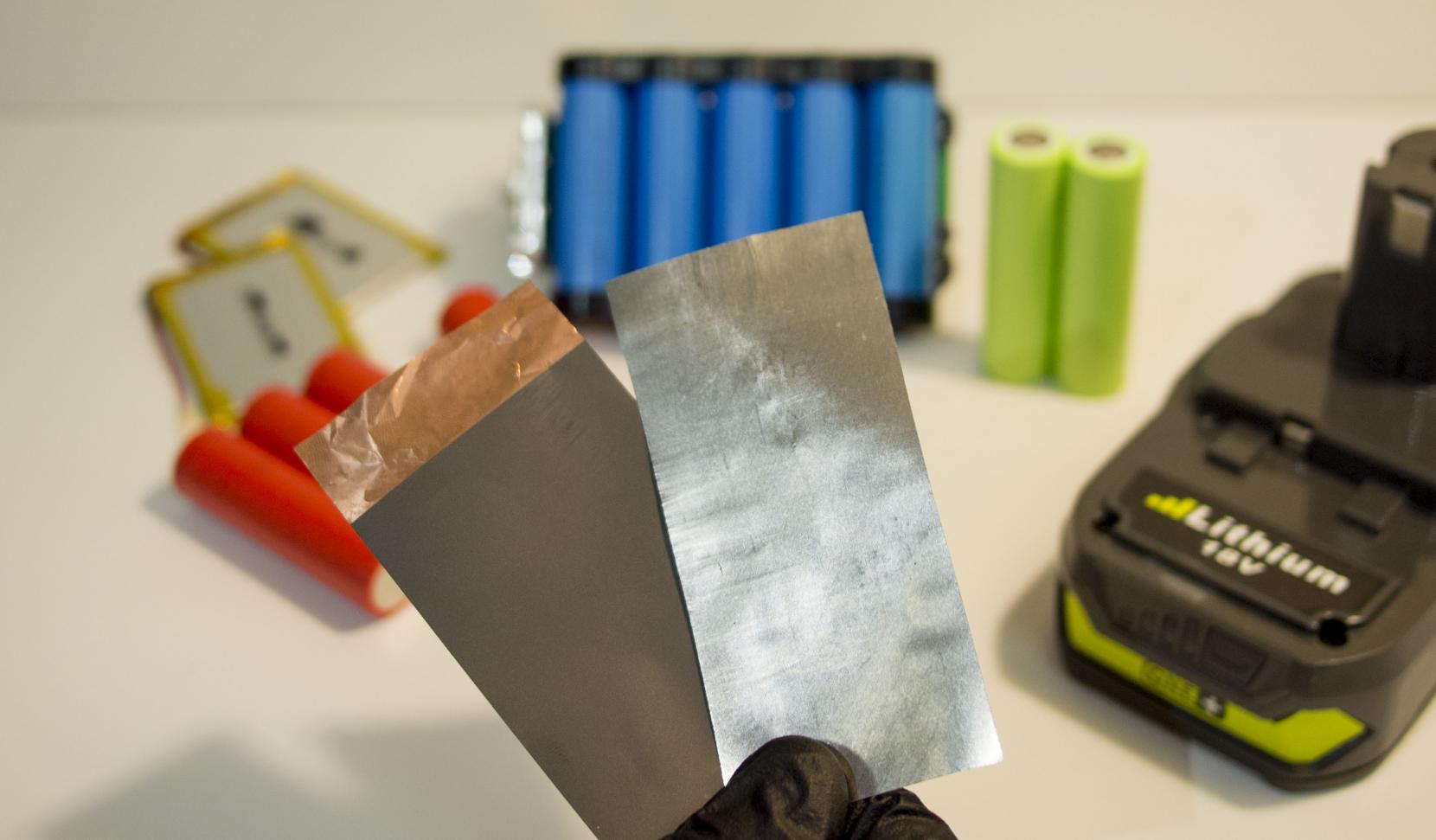November 1, 2017 | News Brief | The batteries we use every day may soon become cheaper, smaller, and lighter. Researchers in the Cockrell School of Engineering at The University of Texas at Austin have discovered a family of anode materials that can double the charge capacity of lithium-ion battery anodes. This means that the batteries that we use in everything from cellphones to large-scale energy storage systems could be more efficient in the future.

The new family of anode materials, which the researchers dubbed the Interdigitated Eutectic Alloy (IdEA) anode, saves time and materials by producing an anode using only two simple steps instead of the multiple steps traditionally required to mass-produce lithium-ion battery anodes.
The researchers created a foil material that is one-quarter of the thickness and half of the weight of the graphite and copper anodes used in virtually all lithium-ion batteries today. As a result, a smaller, lighter rechargeable battery could be made with the new anode in the future.
“It is exciting to have developed an inexpensive, scalable process for making electrode nanomaterials,” said Arumugam Manthiram, a professor and the director of the Texas Materials Institute, who led the team. “Our results show that the material succeeds very well on the performance metrics needed to make a commercially viable advance in lithium-ion batteries.”
Recent efforts to improve lithium-ion battery electrodes have focused on building new nanomaterials atom by atom. Manthiram and his team, which includes postdoctoral fellow Karl Kreder and materials science and engineering graduate student Brian Heligman, developed a new class of anode materials in which eutectic metal alloys are mechanically rolled into nanostructured metal foils.
Since the 1990s, the primary anode for mass-produced rechargeable lithium-ion batteries has been a graphite powder coated on a copper foil. The copper adds bulk to an electrode without improving the battery’s power and the anode requires a laborious, fastidious manufacturing process. By omitting the complicated slurry coating process, the manufacturing of the IdEA anode is drastically simplified.
Kreder, who is the lead author on the study, realized that a micrometer-scale alloy anode could be transformed into a nanomaterial using traditional metallurgical alloying processes.
“The eutectic microstructure forms naturally because of thermodynamics,” Kreder said. “Then, you can reduce the microstructure by rolling it, which is an extraordinarily cheap step to convert a microstructure into a nanostructure.”
The team’s resulting anodes occupy significantly less space, overcoming a critical barrier to commercializing better batteries for use in portable electronic devices like cellphones and medical devices, as well as larger applications like electric cars.
The research was funded by a grant from the US Department of Energy’s Office of Basic Energy Sciences, Division of Materials Sciences and Engineering.







